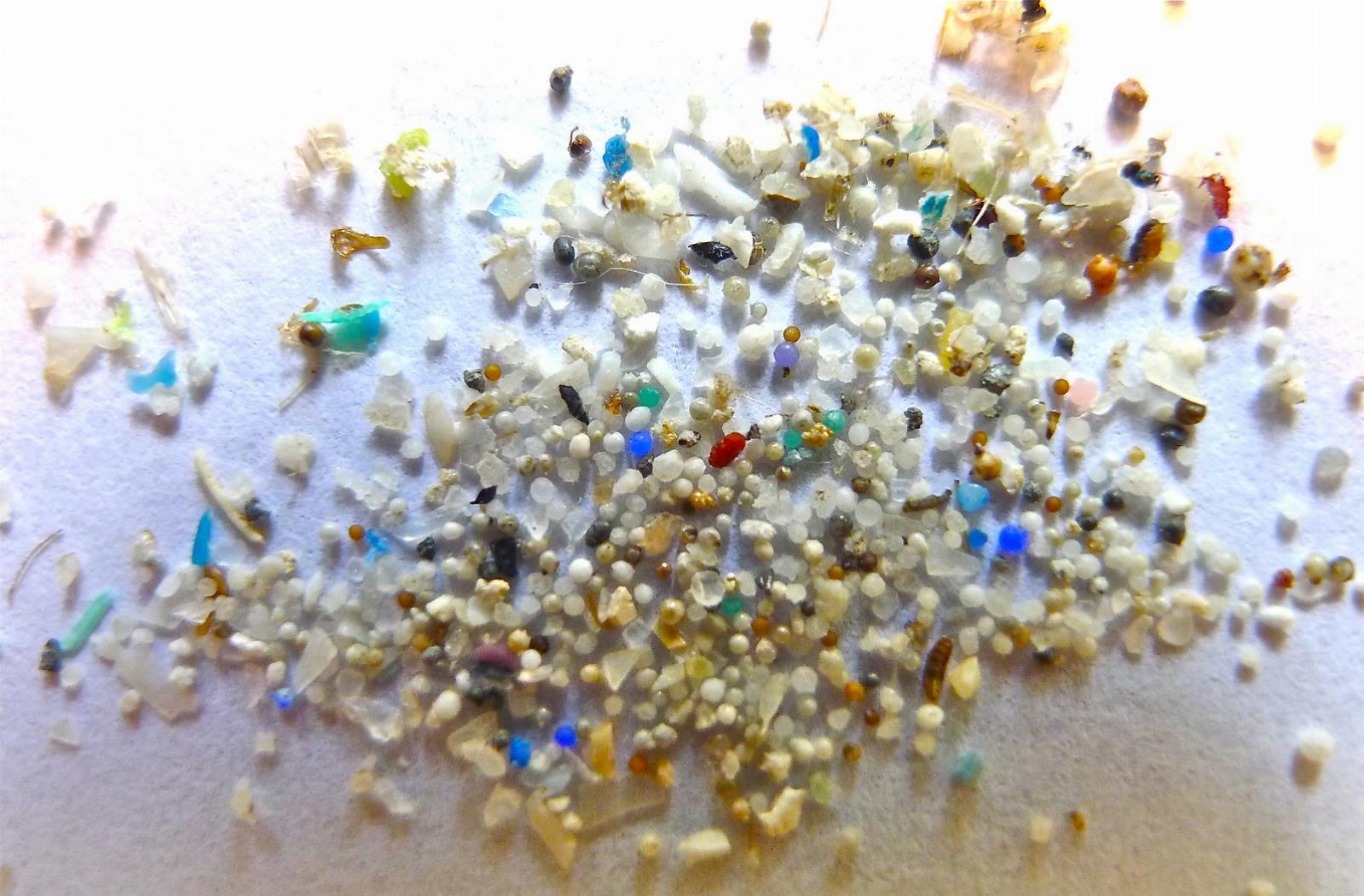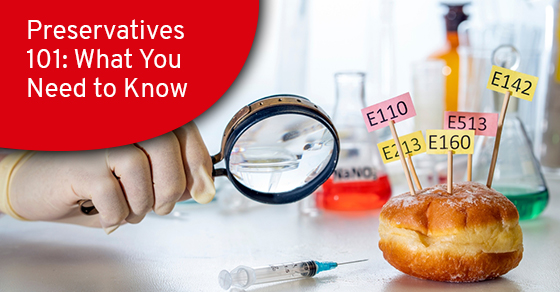
grandpa ray’s tidbits
Food for thought in 2024
We are proud to give you access to Grandpa Ray’s tidbits. Each week, something new and interesting is posted for your enjoyment.

GOING FORWARD
In this week’s Tidbits, I want to give our customers an overview of the food service industry of which we are part. The emphasis will be on how the ongoing pandemic has affected how we get our meals. So let’s see what the trends and projections are for the year ahead.
The pandemic has limited our freedom of moment because of imposed mandates and fear of exposure. For this very reason, grocery and food delivery services have flourished during this time. Bear in mind, there are five elements involved in preparing a meal; planning, shopping, prepping, cooking, and cleanup. The following services offer elimination of some or all of these steps—hence the allure.
GROCERY DELIVERY—the delivery of groceries to your doorstep. This trend in particular was engendered by the pandemic and is estimated to grow to $24 billion by 2025.
USE OF ONLINE “APPS”—the delivery of fully prepared meals. Grubhub, Uber Eats, and Door Dash are the most common app-based food delivery services which partner with restaurants. Restaurants that partner with them have to add delivery charges—this can vary from $2 to $10 per delivery—this doesn’t include tips. A typical burger meal from any given fast restaurant will cost $10 to $12. (Oh by the way, did I mention inflation) Forty percent of all restaurant business in 2021 came from deliveries and in-restaurant pick-ups. Since online ordering is the biggest of these trends, it is no surprise that during 2022 it is projected to grow to $220 billion.
MEAL KITS—this is the “frozen ready to eat” category. An average “kit” of six meals can cost $6 to $10 per meal. The obvious drawback is the frozen aspect; the upside is no delivery surcharge or tipping requirements. In some cases, free shipping.
Ray Duran (aka Grandpa Ray)
MISCELLANEOUS BULK MEAL PROVIDERS—thousands of meals provided by contractors. A “you get what we give you” approach—typically, by government contracts or subsidized charitable organizations. Meals on Wheels comes to mind. This would be food for the stomach, but not for the soul.
SMALLER PROVIDERS—specialty meal providers for niche sectors. Catering services are typical of this category. They provide food for all demographics, usually without regard for individual dietary concerns—also, these providers use fresher ingredients and the food is quite good.
THEN…THERE’S SENIOR SUPPER SERVICES!

“CHRISTMAS TREE, OH CHRISTMAS TREE”
(A retro-Tidbit: This could be considered a form of re-gifting)
Once again we are poised to venture into the most wonderful time of the year—the Christmas season (the hyper-commercialization and looming recession not withstanding). The family-centered activities which began at Thanksgiving will continue with the added blessings of; gift giving, good will toward mankind, and above all (for the majority of Americans) honoring its namesake, Jesus Christ.
I have never given much thought to Christmas trees, other than I am enthralled by the beautiful and unique ways they are decorated. Since, the Christmas tree is indisputably the principal symbol and ornamental center piece of the season, I decided a deeper look was in order…so, I went down the proverbial rabbit hole.
It turns out that various Evergreen varieties have been used across all cultures to honor their respective deities: the Druidic Celts; the Egyptians, the Romans, and even the Scandinavians (as in the Vikings) did it. The primary difference between then and now is that then, only a solitary branch was used; usually over the doorway, which in my estimation renders those ancient deities as lesser gods… only a branch? Come on! Whereas, the tallest Christmas tree on record for ours is 122 feet tall. Hallelujah, baby!
Of course, attaining to those heights didn’t come easy. Historically, Germans were the first to invite full blown trees into their homes. In 1747, the tradition was brought to America by German settlers in Pennsylvania. As was to be expected, they encountered resistance from other Christian sects which regraded the practice as pagan—some still do. Ironically, it took British royalty to popularize the Christmas tree in America. In the 1848 edition of the London News, Queen Victoria and her family were depicted as standing around a Christmas tree in their home… castle?… mansion? Probably their “Winter residence.” Anyway, the hoity-toity from our East coast saw the setting as fashionable and glommed onto it; before long the hoi polloi followed suit and acceptability was ushered in the front door along with the Christmas tree. The Christmas tree had arrived! “Let the decorating begin!”
A FEW MORE TIDBITS FROM THE RABBIT HOLE
-Christmas trees have been sold commercially in America since 1850.
-New York city, in 1912, was the first to erect a community tree in its town square.
-Franklin Pierce was the first president to formally introduce a Christmas tree to the White House.
-Thomas Edison’s assistant is attributed with the idea of using electric lighting on Christmas trees (that deserves a Pulitzer Prize!)

ON A MORE PERSONAL NOTE!!
MERRY CHRISTMAS TO ALL OF OUR SENIORS OUT THERE!


RICE
If you were to consider all the rice that has been grown over the millennia, and compare it to all the sand in all of Earth’s beaches, you couldn’t help but wonder…”which number is greater?” Unfortunately, since these numbers are unquantifiable, I guess we’ll never know.
What we do know is that there are (believe it or not) 40,000 types of rice; however, there are only two species of domesticated rice grown globally—Asian and African. Rice comes in two types, white and brown. The two largest consumers of rice are China and India. Over the millennia rice has made its way around the world—well almost, Antarctica is the only continent in which rice is not grown.
White rice is a good source of fiber and is easy on the digestive system; brown rice has the added nutritional advantage of minerals and vitamins. (all white rice starts off brown; white rice results from the removal of the husk and kernel). Both are gluten-free and a quick source of energy. The white variety has a shelf life of several years compared to the brown. Rice can be prepared in various ways and is quite versatile.
Its versatility knows no bounds; according to some recent scientific analysis, “sticky” rice was mixed with mortar to hold the “Great Wall” of China together. I guess that makes rice the best “rib-sticker” food EVER!
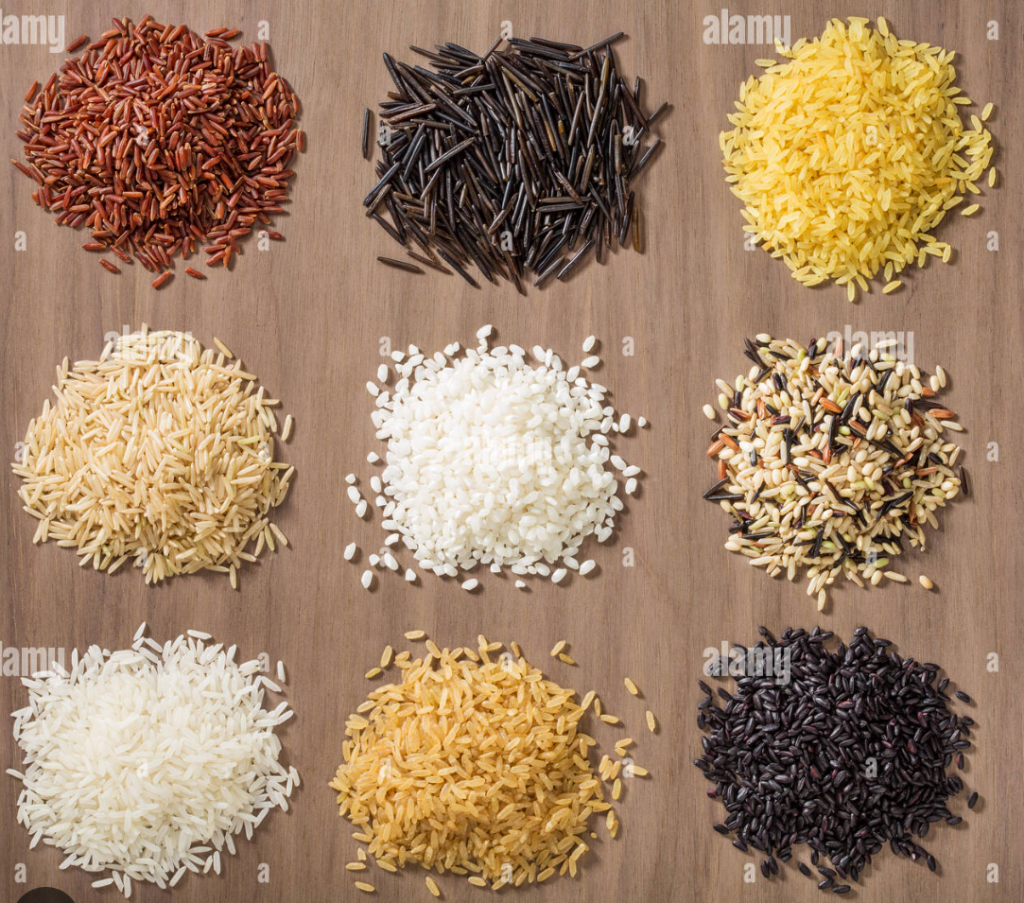

CALORIC CUTBACK: NOT QUITE FASTING
—A study comparing the long-term health benefits of various dietary regimens was published recently by Yale university researchers . A similar, more exhaustive, study was published in the ‘70s by a husband and wife research team; their research paired various combinations of exercise regimens with all the various diets in their study. The findings of both studies were similar—EAT LESS. LIVE LONGER AND HEALTHIER! The researchers of the more recent Yale study benefited from advances in medical technologies and, as a result, they claim to have isolated and identified the underlying biological mechanisms which account for the benefits derived from a simple reduction in caloric intake.
The Yale team determined that there is an immune system connection (through our metabolic processes) to the low grade inflammation that plagues everyone (inflammation is the cause of chronic diseases that in turn shortens life-spans). Their conclusions are very technical, and as such, I will not address them here. Simply put, doctors have always known that a sound metabolism is the cornerstone of a healthy lifestyle. As far back as the 1800s references to “gut” health began: “an apple-a-day keeps the doctor away”; and in the 1900s, “health begins in the colon” became the medical mantra. The less wear and tear on your gut, the longer it will serve you.
If you overwork your digestive system, it will breakdown sooner. The group that had the best long term health outcome didn’t adhere to a specific diet, they just ate 14% less than the other groups. Their superior immune response helped them to better fend off the negative effects of the attendant inflammation.
Unfortunately, a lot of Americans suffer from metabolic syndrome (diet-induced obesity) because they have done just the opposite.
THE UGLIEST BIRD ON THE PLANET: BUT IT’S WHAT’S INSIDE THAT COUNTS—
Thanksgiving is right around the proverbial corner. The centerpiece, of the Thanksgiving repast we are all eagerly awaiting, is the peculiar poultry fowl known as the turkey. Out of curiosity, I decided to learn a bit more about the most well-known member of the Grouse family. Prior to that, the totality of my knowledge can be summed up as “a big bird we eat once a year.” In this week’s Tidbit, I include just a handful of interesting facts, that hopefully, will give you a better appreciation for this gobbling tom.
Here we go. First of all, the turkey is the largest game bird in America. There are five sub-species of turkeys. The Eastern wild turkey is the largest and can weigh as much as 35 pounds. The domesticated variety has been around for two-thousand years; however, there are still many wild turkeys in the U.S. and Canada. Surprisingly, prior to domestication, turkeys were not used for food; they were killed solely for their feathers (probably because they are so ugly). Speaking of which, Toms will grow five to six thousand beautifully iridescent feathers. Their courting prowess has everything to do with the strutting display of their plumage, very similar to male peacocks—“how do you like me now?”
Males are referred to as toms or gobblers (this is because only the toms make the characteristic gobbling sound, which can be heard as far as a mile away). Females are known as hens; the juveniles are called jakes; and the chicks are called poults. Turkeys are “social” animals; a group of them is referred to as a “rafter.” In addition to gobbling, which only the toms do, rafters communicate with each other by using purring and clucking sounds. A typical Tom has a lifespan of ten years (for obvious reasons, many don’t make it that far).
I hope this gives you a better appreciation for these magnificent (but ugly) birds.

Believe it or not, the turkey came very close to becoming America’s National bird. Ben Franklin wanted it to be the turkey, but lost out to George Washington who chose the bald eagle.
One particularly interesting aspect of the turkey is their visual acuity. As well as having near 360 degree peripheral vision, they see in color and have excellent depth perception (I’d like to know how researchers figured that out). Last but not least, everything in their field of vision is always in focus—no adjustments necessary!

THANKSGIVING AND GRATITUDE: FAMILY, FRIENDS, FOOD, AND FUN
The beginning of the month of November is an anticipatory wind-up leading up to the gathering of families all over the country, for the most awaited meal of the year—the turkey-centric feast called Thanksgiving. The coming together of loved ones, friends, and others at this time is rich in significance beyond the amazing assortment of delicious food we will enjoy. As the name implies, Thanksgiving is an expression of gratitude for something wonderful that happened in the formative stages of our Republic.
We all know the story. Thanksgiving commemorates a historical event; it also, more specifically, represents a profound expression of the human heart—gratitude. Gratitude is not to be taken lightly. Unfortunately, like other important aspects of life, the din of modernity has relegated gratitude to something less than it is. However, it’s importance wasn’t lost to peoples of the distant past. For instance, Cicero the famous Roman orator noted that, “Gratitude is not only the greatest of virtues, but the mother of all others.” This season let’s express our gratitude, not just for the commemorated event, but for all of life’s blessings.
The month of November is National Gratitude month, which makes it the perfect time to do this. I might add that studies have been conducted on the health benefits of gratitude. The findings indicate that the sincere human expression of gratitude has multiple beneficial aspects; physical, emotional, mental, and spiritual. So, do yourself a favor— BE GRATEFUL!
I would like to revisit the overarching theme of this holiday, gratitude. This time from a personal perspective.
PRACTICING WHAT I PREACH: I want to extend our heartfelt gratitude to all of you (our senior family and friends) from all of us at Senior Supper Services…THANK YOU! As for myself, I am both grateful and gratified to have met those of you on my route. It is my continuing pleasure to know and serve you. May God’s blessings overwhelm everyone of you this season!
WRAPPING UP OCTOBERFEST MONTH
Oktoberfest is celebrated in Munich, Germany and is the largest folk festival in the world, drawing over six million attendees every year. It marked its 200th anniversary milestone in 2010 and continues to break records in attendance, not to mention beer and chicken consumed. (you would think the German tube steak, Bratwurst, would be alongside the beer in this statistic??).
Before it came to be known as Oktoberfest, it was a celebration of a Royal wedding between Prince Regent Ludwig of Bavaria and Princess Therese of Saxony-Hilburghausen. Besides the wedding, the only other celebratory event was a horse race—no beer tents or carnival rides. The wedding took place on October 12,1810; the celebration (or first Oktoberfest) took place five days later on October 17,1810.

Two-hundred-plus years and counting, it has had a great run. Of course it has had its share of setbacks and disruptions—primarily, wars and disease outbreaks. Speaking of wars, during the Vietnam war, I was fortunate enough to have been stationed in Germany for two of my three years of service. Shortly after my deployment, I was able to bring my wife over. During the course of our stay, we attended an Oktoberfest. As foreigners , it had a surreal or otherworldly feel to it; the scale and the novelty was overwhelming. Any way, I digress.
Each year the celebration is officially launched midday at 12 o’clock when the presiding mayor of Munich taps the first beer barrel, and proclaims, “Ozapft ist!”, which means…”it is tapped!” Over the years, Oktoberfest has taken a family friendly turn; each day of the month-long celebration, it’s a family oriented affair until 6pm, then the adults take over. Prost!
AMUSING HISTORICAL SIDE NOTE (MORE LIKE HYSTERICAL): In Brazil, the country of Carnival, the city of Blumenau hosts the world’s second largest Oktoberfest celebration. Actually, Blumenau is a German enclave of about 300,000 people. Try to imagine (if you can) dancing samba to a Bavarian brass band! Again, I say Prost! Oops! In this instance…Saúde!
rAY dURAN
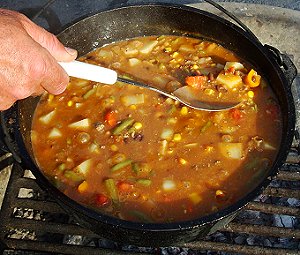
QUEAZY CUISINE: PIONEER (OLD WEST) DIET
The resourcefulness of the hearty lot of folks that ventured Westward cannot be overstated. When it came to eating, their resourcefulness was a life-saving strategy. When their initial provisions were exhausted en route, they resorted to what was immediately available in their surroundings. In these austere circumstances, “waste not, want not” was their mantra; therefore, any and everything was candidate for consumption. Anything that was marginally edible was eaten.
What follows is a list of some of the things that kept the early pioneers alive on their westward trek, and continued even after they arrived.
—Roast skunk: “tasted better than raccoon or possum.”
—Bear headcheese: the meat on the bear’s face made a welcome meal.
—S.O.B. stew: made of the least desirable parts of an animal—fat, liver, heart, brains, bone marrow, and sweetbread…What!…no tongue!
—Calves feet jelly: a gelatinous desert made from calf hooves, sugar, and eggs…Jell-O eat your heart out!
—Prairie mountain oysters: animal testicles (here comes the queazy) were considered a delicacy… no thanks, I’ll just have another helping of roast skunk!
—Acorn flower: ground acorns were resorted to when traditional flour was unavailable.
—Sweet potato coffee: coffee was even more rare than flour; chicory and acorns were also used for that “necessary” morning cup of Joe.
CELEBRATING OUR HERITage
Senior Supper Services in acknowledgement of our indigenous population will be providing a sampling of the “indigenous cuisine of the Americas” in this week’s menu. The official date for the event is always the day after Thanksgiving. This is very fitting since, in the American psyche, Thanksgiving is associated with our Native American family—Pilgrims and Indians dining together on this historic event.
What are some of the foods that characterize the Native American diet? Of course, we naturally associate; wild turkeys, and roaming herds of bison, blue-corn meal, and fry bread with the Indian diet. The truth is that their diet has always been dependent on locally available animals, fruits, vegetables, and herbs. (there are 574 federally recognized tribes which occupy different regions of the continent). Their diet has evolved over time; today they can boast of a “new and modernized cuisine.”
In some cases, aspects of Southwest cuisine have been incorporated into the newer iterations. Ancestral ingredients with contemporary regional adaptations have yielded an amazing array of unique dishes. Here are just a few of the more noteworthy restaurants operated by indigenous chefs: TOCABE in Denver, Colorado; BLACK SHEEP CAFÉ in Provo, Utah; and in California, CAFÉ OHLONE.
I am curious to see (more like curious to eat) the commemorative meal, Amber, our SSS chef will prepare, to highlight the occasion—bon appétit!
NOTE FROM CHEF: We acknowledge that many Native Americans have a different feeling about celebration of Native Culture mixed with Thanksgiving. Thanksgiving is a reminder of the beginning of our land being bribed from us with barrels of ale, the start of major movement from our homes, a truly hard and unfortunate time for our ancestors. So Gill and I want to Celebrate our heritage at the start of the Fall season this year. And share with you a very popular recipe from His tribe. We hope you enjoy a taste of our culture.

COFFEEHOUSES:
THE “OPIUM DENS” OF CAFFEINE—
Even though, coffee was already in use in the Middle East, when it eventually arrived in Europe it took it by storm, and became so popular than it competed with alcohol as the favorite drink. Vienna is where the first coffeehouse, as we have come to know them, opened for business. Alcohol had its bars; coffee had its coffeehouses. Coffee was considered a drug, but it was viewed favorably because it made people more productive. Coffeehouses became the go to public forum to hear the issues of the day discussed.
Overtime, coffeehouses became intellectual havens where one could hear the greatest minds pontificate. Because of this “social and intellectual chemistry” the coffeehouses broke the universities’ monopoly on knowledge and became known as “penny universities.” During the Enlightenment period, coffeehouses were laboratories for its development.
Fast forward to today: coffee has become the most legally traded commodity in the world next to oil; over 500 billion cups are consumed every year; 25 million people earn their living with it. Starbucks has become the “flagship” of today’s coffeehouses. The intellectual “air” of the coffeehouse continues with clusters of them around colleges and universities; Laptop wielding students drink their daily fix of caffeine to fuel them up for their next round of intellectual endeavors.
This benign addiction is worldwide; It has become part of everyone’s morning routine—heaven help us if coffee beans were to magically disappear.
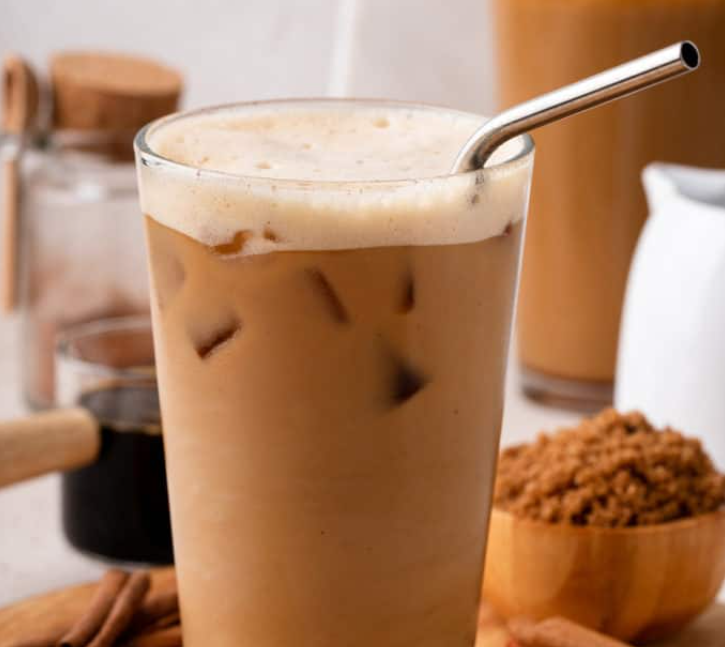

THE WESTERN DIET:
BURGER DIPLOMACY GONE BAD?—
The exporting of the American lifestyle to the world, for the most part, has been well received writ large: Levis, Hollywood, pop music, and McDonald’s, etc. What could go wrong? (after all we are the envy of the world).
Hamburger “diplomacy”, or the exporting of the American diet has recently come under scrutiny because of its fast food aspect. Fast food, meaning, fast but unhealthy. In the long term, the Western diet may be dangerously unhealthy. The immune response may be where the damage is done.
Autoimmune disease is on the rise worldwide. Incidents of autoimmune disease have increased over the last fifty years or so. Its prevalence was initially in the West; now it has become more and more prevalent in Asian and Middle-eastern countries as well. What has changed? Our DNA hasn’t changed—an external factor must be at play here. The culprit according to researchers may be the Western diet.

Aurelio Duran
Autoimmune disease causes the immune system to wrongly see it’s own cells as invaders and attacks them. The lack in the Western diet of essential health-promoting ingredients results in our gut bacteria (our microbiome) being altered and depleted, thus, directly affecting our immunity in this self-destructive way. It is important to note here that having a genetic predisposition to autoimmune disease plays a significant role in who gets it and who doesn’t. In other words, it doesn’t matter how bad your diet is—without being genetically predisposed, you won’t get it. Play it safe. You can watch a good movie while wearing your favorite jeans, just don’t eat fast-food while doing so.
What will become of cows as we know them? First their milk, then their beef—I suppose that they will figuratively be “let out to pasture.” “
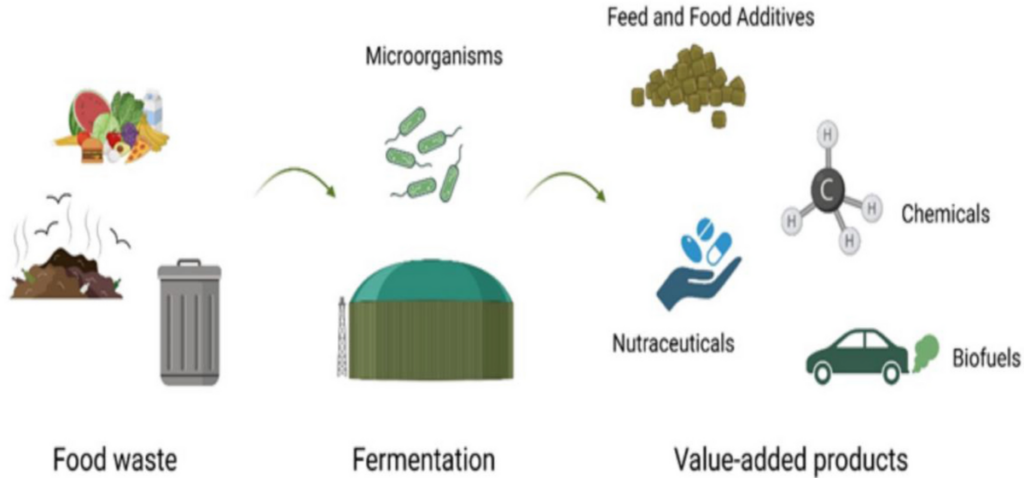
IMPROVING ON MOTHER NATURE?
BY: AURELIO DURAN
In the past, I briefly touched on the up-and-coming faux proteins and their increasing prevalence. 2022 seems to be on track to accelerate the availability of a host of these substitutes—case in point: Animal-free dairy. Apparently, bovines have fallen out of favor with some groups; vegans, vegetarians, and Flexitarians, to name a few. (not to mention environmentalists)
A specialized fermentation technique is used to create these animal-free products which are, in their own right, legitimate proteins, but are not plant-based. People with milk allergies will also be allergic to animal-free dairy products. That aside, as the taste and affordability improve, the higher the likelihood of their overall acceptance.
Already, Animal-free dairy ice-cream is in circulation and gaining in popularity. Smitten Ice Cream brand debuted in 2020, and followed shortly there after by the Brave Robot brand. In 2021 Modern Kitchen introduced its patented form of cream cheese. Later this year, a whey protein ersatz is expected to hit the market. It appears that we are in the throes of a food revolution. I just hope it ends well—“it doesn’t pay to fool with Mother Nature!”
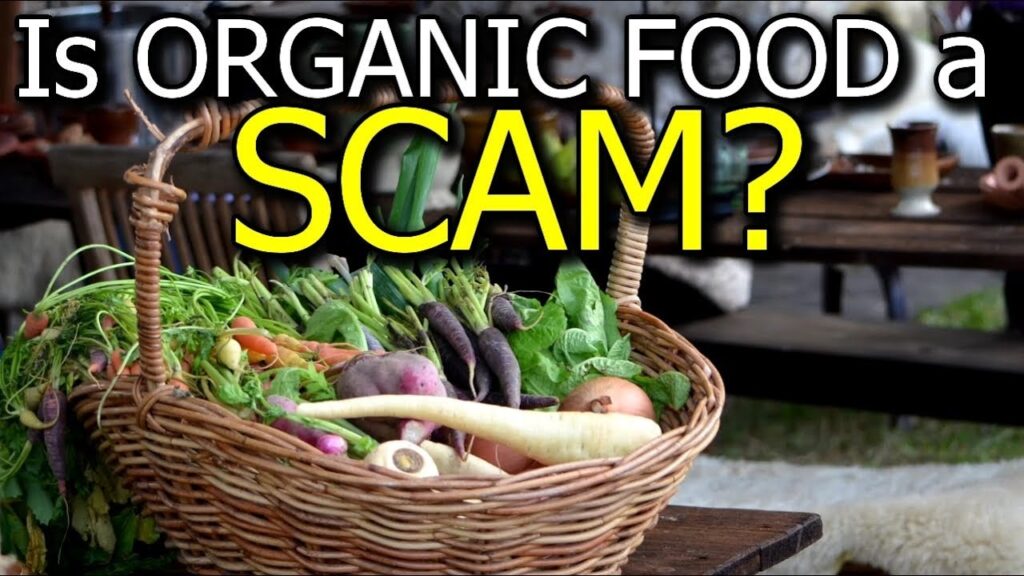
“ORGANIC” FOODS: REAL OR FRAUD?
Unfortunately, the hyper-politicization of everything in our culture, has given rise to confusion and uncertainty about issues that should be exempt from partisanship. Case in point, while researching for this week’s Tidbits, I found conflicting and contradictory information about all things “organic”. Glaringly on display, was advocacy for sustainability and “green” concerns in the pro-organic camp. The contrarian view insists that the majority of the pro-organic information is mostly hype. Both sides, all the while, adamantly proclaiming that “science” supports their position.
After a brief period of contemplating the conflicting data, I arrived at a personal conclusion which makes sense for me. If such things as the weather, health, and food are seen through an ideological prism, we have a bigger problem than the negative affects of pesticides. I have never knowingly eaten (or have sought to eat) anything organic my entire life. As far as I can tell, eating non-organic produce hasn’t ill-affected my health in any appreciable way (the same goes for parts per million ingestion of; rodent parts, plastic residue, and heavy metals). The bottom line here is you decide for yourself, if eating “organic” is essential to your health and well-being—even if it’s only psychologically comforting…it’s your call!
Some products such as snack foods are designated as organic—this is where suspicions arise. The fact that some “organic” foods aren’t subjected to the same rigorous processing that produce undergoes is problematic. The coveted designation of organic on labels is, often, justification for higher prices.
NOAH’S ARK FOR SEEDS

— In the biblical account of Noah’s Ark and the Great flood, a faithful remnant (or “seed”) was saved via the ark in order to re-seed humanity in a postdiluvian world. Over a few millennia, the multi-generational offspring of the “original seeds” burgeoned into a worldwide population approaching 8 billion souls—and they all have appetites!
In the future, should there be a man-made catastrophe that poses an existential threat to humanity, guaranteeing the replenishment of the food stocks would be of paramount importance. Accomplishing that is only feasible at the level of seedage —a store of seeds that could repropagate the food supply. The likelihood of such a cataclysm is taken very seriously—enter seed arks, otherwise known as seed vaults.
Seed vaults are repositories of seeds from many geographic regions—there are currently 1500 such regional vaults worldwide. The mother lode of all seed vaults is the Global Seed Vault in Svalbard, Norway. Situated in the side of a mountain (somewhere above the Arctic circle) this gene bank is the most impervious to natural disasters and is the “back-up of last resort.” The interior is cooled to -18 degrees and houses nearly a million different seeds of every variety. Pray we never have to invoke their use.
Scary fact: the source of much of the world’s “food seeds” is in control of four corporations.
PRESERVATIVES: THE EMBALMING OF FOOD—
The inevitable growth of microbes in most foods is the primary reason food spoils—with air being the primary enabler. In this week’s Tidbits we will take a brief look at what has historically been done to slow down this aerobic assault. Our primary focus will be on the three basic types of additives used in the preservation process.
Microbial breakdown of food can be arrested to varying degrees by drying, salting, use of air-tight containers, and by chilling. (yes, salt is number one in the preservative pantheon).There are three primary reasons why preservatives are incorporated in food—there are preservatives that; extend the shelf life of food, others enhance its flavor, and some cosmetically augment it—make it pleasing in appearance. Let’s take a look at the premier example in each category.
-Monosodium glutamate, or MSG: is a common food additive used to intensify and enhance the flavor of savory dishes. MSG is used to enhance the flavor of many processed foods. Some people may have a sensitivity to MSG, but it’s safe for most people when used in moderation.
-The most widely used dyes are Red 40, Yellow 5, and Yellow 6 – accounting for 90% of all dyes used. They contain carcinogens and may cause allergic reactions. Each year, about 15 million pounds of synthetic dyes go into the U.S. food supply (actually, the “processed” U.S. food supply).
-Sodium Nitrate—Frequently found in processed meats, sodium nitrite acts as a preservative to prevent the growth of bacteria while also adding a salty flavor and reddish-pink color.
Perhaps the most famous single example of a long-lasting processed food still on display is the last McDonald’s Big Mac ever sold in Iceland; McDonald’s closed its only restaurant in the country in 2009.
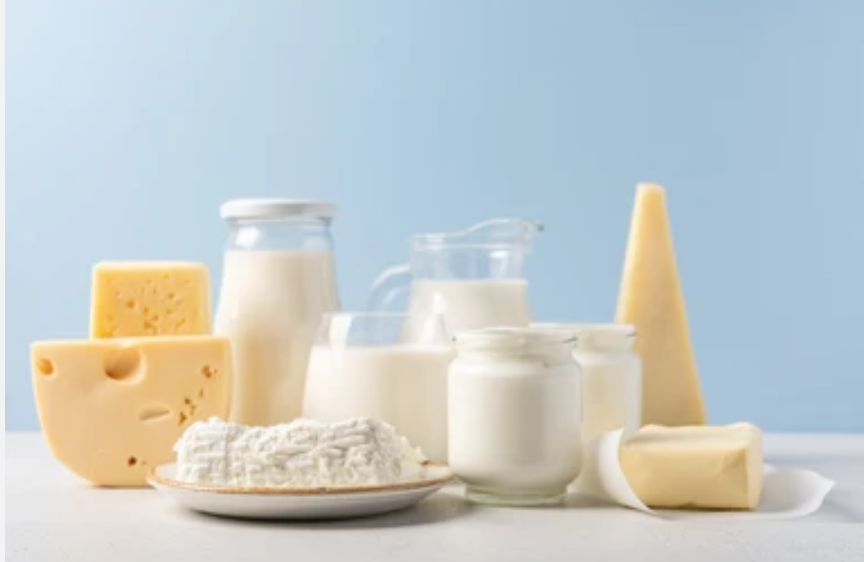
got sour milk – say cheese!
One of the oldest processed foods known to man is cheese. Historically, the use of cheese by early farmers predates pottery, writing, and the use of tools, but not the domestication of sheep and goats which these protofarmers harvested for milk. These ancient farmers soon discovered that milk soured when left in warm conditions. (the lactic acid in the milk congeals the proteins into edible curds.) It was just a matter of time that curds would be creatively processed in various ways to form a variety of cheeses—the byproduct of this process became known as whey. The most auspicious characteristic of cheese was that it could be preserved, stored, and eaten in the winter or when times were lean—think of it as the beef jerky of dairy products.The minerals, fat, and protein in cheese made it a valuable life-supporting commodity.
Over time, through maritime exchanges, this newfound commodity soon became the object of trade and commerce throughout the then known world. As the knowledge of cheese making spread, each culture that adopted it added its own peculiar variation. The most influential and impactful of all the cheese practitioners were Europe’s medieval monks. Their nonstop experimentation with different milk types and aging techniques yielded amazing results—Roquefort, Munster, Parmesan, and early varieties of Swiss.
After the perfecting of cheeses through the Renaissance and the manufacturing advances of the Industrial revolution, cheese making became so profitable that in the modern era, worldwide consumption approaches 50 billion pounds of cheese annually.

This is a picture of 2 of our seniors eating our Food at a Fund Raiser this year 2024
RESTAURANT INDUSTRY OVERVIEW
Up until recently, fast food (i.e. McDonalds) and fine dining (i.e. Olive Garden) were the mainstays of the restaurant industry. Fast food is characterized by affordability, quick in-and-out service, low quality ingredients, and food loaded with preservatives. Fine dining, on the other hand, offers fresher ingredients and an ambiance with table service—and let’s not forget the customary gratuity. However, “Things they are a-changing.”
Now, there is a new and rapidly expanding phenomenon in the industry—fast casual dining. Fast casual dining is a hybrid of fast food and fine dining—the fast casual concept incorporates affordability with quality and convenience. Chipotle grill and Panera are examples—with the emphasis on fresh and healthy food in an upscale fast food setting. “Fresh” is the industries new mantra, with “organic” a close second. Typically, any menu offering which touts fresh and organic is inevitably more expensive. Understandably, fast food chains have caught on to the trend and their renewed focus is on freshness—with a token cut back on preservatives. Wendy’s and Subway are examples of fast food chains with multimillion-dollar Ad campaigns proclaiming their newfound dedication to freshness—primarily because of fast casual cutting into the fast food market share.
So where does Senior Supper Services fit in the scheme of things? Our menu is what sets us apart from all of the fast casual players. For starters, we offer one-meal-a-day in our multiethnic menu, which on a rotating basis includes all the various popular cuisines. For example, high quality; Italian, Mexican, Chinese, Thai, German, French, et al on a constantly rotating basis—with the exception of hamburgers and pizzas, which we don’t consider fine dining. Secondly, others utilize delivery services as an adjunct to in house dining; whereas our model does not currently include in house dining—and we do our own meal deliveries. Thirdly, most places do not offer the convenience of accommodating individual dietary preferences. And most important of all—Our exclusive “Seniors only” business model, in no uncertain terms, renders us as unique in the marketplace.
Location
Senior Supper Services
2055 Elks Dr.
San Bernardino, CA 92404
Contact
Need additional assistance? Please contact us:
sssdelivery@yahoo.com
909-915-5765
Hours
We are open Monday to Friday, from 8:00 am to 6:00 pm.
Saturday from 11am to 6pm
Sunday: Closed
Senior Supper Services an exclusive meal Service for Seniors
WE DELIVER TO:
CALIMESA, YUCAIPA, MENTONE, REDLANDS, HIGHLAND, DEL ROSA, SAN BERNARDINO, COLTON, GRAND TERRACE, LOMA LINDA, RIALTO, BLOOMINGTON & FONTANA
